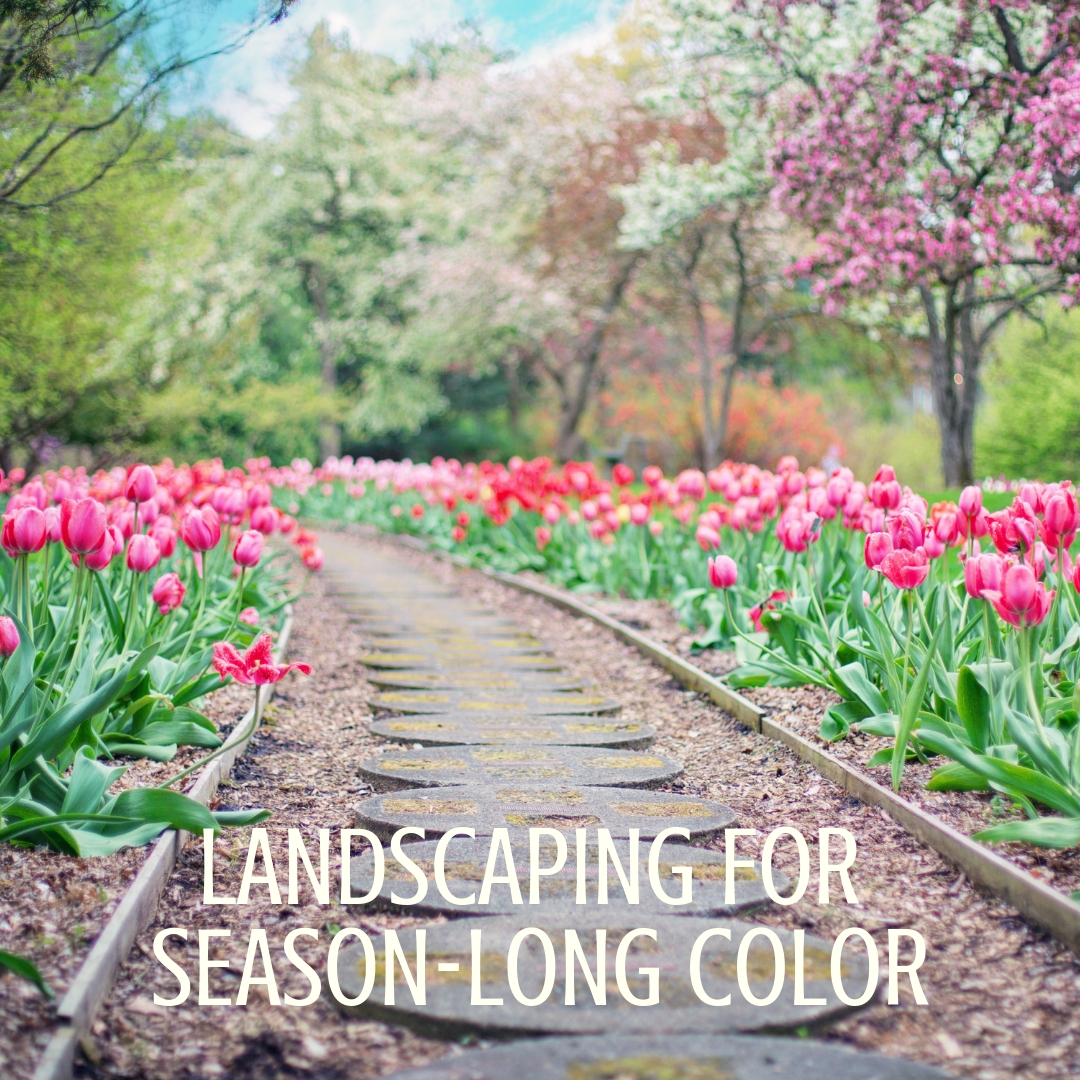Landscaping for Season-long Color

Each season brings with it new colors and emotions. Many homeowners seek help in selecting plant material that will offer season-long interest in the landscape. Different colors can add variety and add interest to the landscape. Plants should add consistency and tie the landscape design together. Harmony in a landscape is often accomplished when the same color schemes are repeated.
When planting for color, it is good to remember some general rules. Cool colors, such as shades of green, blue, and soft pastels, blend well together and have a tendency to make an area seem larger in appearance. These colors also suggest calmness or tranquility. Warm colors, such as shades of red, orange, and yellow, jump out visually and act as colorful accents. These colors imply lively and inviting feelings.
Complementary colors are those colors that most optimally accentuate each other. Yellow is considered complementary to purple. Red is complementary to green. Orange is complementary to blue. White is one of those universal colors, which complements all colors.
There are many different plants which can add seasonal splendor to a landscape. Many plants display an array of flower colors throughout the season. Some plants offer different textures while others put on a spectacular show in the autumn as their colorful leaves proclaim the end of the season. When planting for color, it is important to think of the importance of foliage effect along with flower color.
With literally thousands of options in choosing plant material, it can oftentimes be overwhelming to homeowners in deciding which plants to buy. Catalogs and magazines are great for getting ideas. It is also a good idea to visit the nurseries and garden centers periodically throughout the year to see what plants are in bloom. Choosing a variety of plants with staggered bloom times, along with those that add unique textures and distinctive leaf colors can add seasonal interest to any landscape.
For a list of some of the more commonly sold plants and their approximate bloom times along with plants that offer variety to the landscape in the form of texture and seasonal leaf color, click here.
This article was written by JayDee Gunnell, Horticulture Agent, Cache County Extension, Sheriden Hansen, Extension Assistant Professor, Davis County, Linden Greenhalgh, Extension Associate Professor, Tooele County, and Holly Christley, Horticulture Assistant, Tooele County.
 The heat is on, and many lawns are struggling. Consider these suggestions for keeping your landscapes and gardens healthy while also saving water.
The heat is on, and many lawns are struggling. Consider these suggestions for keeping your landscapes and gardens healthy while also saving water.
